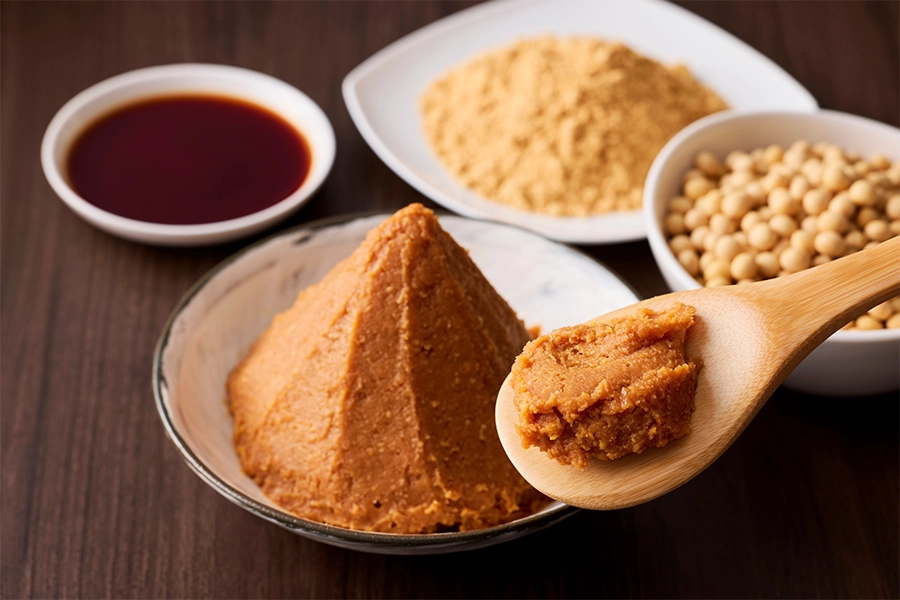
- Industry news
Industry news
- Category news
Category news
- Reports
- Key trends
- Multimedia
- Journal
- Events
- Suppliers
- Home
- Industry news
Industry news
- Category news
Category news
- Reports
- Key trends
- Multimedia
- Events
- Suppliers
How ingredient innovators are solving the salt reduction challenge
Key takeaways
- Sodium reduction has evolved from a regulatory requirement to a mainstream consumer demand, driven by public health initiatives.
- Reformulation challenges remain complex since salt affects flavor, preservation, and texture, as ingredient innovators like Lionel Hitchen, Levapan, and Corbion develop multifunctional solutions.
- Flavor-led, clean label approaches are emerging as the new standard, with umami-rich, natural ingredients enabling salt reduction without compromising sensory quality.

Sodium reduction has shifted from a regulatory target to a mainstream consumer expectation, as awareness of the links between high salt intake and heart disease deepens. However, salt serves a multifunctional purpose in food products — from taste and texture to preservation — making the reduction in processed meats, cheeses, sauces, and baked goods complex.
The WHO’s 2023 “Global Report on Sodium Intake Reduction” was a turning point for sodium reduction. The report found that the average global sodium intake was more than double the WHO’s recommended limit of 2,000 mg per day, while only 5% of WHO member states had comprehensive sodium reduction policies. The WHO calls for mandatory reformulation targets, stronger front-of-pack labeling, and public education as part of its “Reduce by 30% by 2025” global goal.

The European Commission’s Farm to Fork Strategy prioritizes reformulating processed foods to lower salt levels. The initiative sets targets to reduce the overall population’s salt intake by 30% and encourage reformulation in high-contribution categories, such as bread and bakery products, processed meats, snacks, and convenience foods.
Meanwhile, national-level HFSS (high in fat, sugar, and salt) regulations are tightening. In the UK, for example, HFSS legislation restricts the promotion and advertising of HFSS foods online and in-store.
“Over the past decade, salt reduction has moved from a reformulation goal to a mainstream business priority. This shift is driven by consumer health awareness, public health targets, and evolving marketing regulations,” Fran Padgham, marketing manager at UK-based flavor solutions firm Lionel Hitchen, tells Food Ingredients First.
“Sodium reduction is no longer just compliance, but a route to better nutrition, stronger consumer trust, and competitive differentiation.”
Likewise, Daniel Ramírez, marketing manager at Colombia-based food ingredients supplier Levapan, tells us: “In recent years, sodium reduction has evolved from a regulatory-driven goal to a consumer-driven demand. Shoppers are increasingly aware of the link between sodium intake and cardiovascular health, but still expect foods to deliver the same rich, savory taste.”
“This shift has encouraged brands to seek clean labels and natural alternatives to artificial flavor enhancers.”
Challenging food categories
Reducing sodium in food isn’t a singular challenge — it varies across different categories and even the various components of a meal, explains Stephan Dobbelstein, business development director at Corbion, an international food preservation specialist.
“Many products, especially processed meats and snacks, rely heavily on salt for flavor and preservation. Plus, ready-to-eat meals often use sodium to extend shelf life. So, while there’s a strong push for healthier options, manufacturers must find different ways to keep the taste and quality consumers love,” he tells Food Ingredients First. Sodium reduction is shifting from regulation to consumer expectation, driving global reformulation across processed foods.
Sodium reduction is shifting from regulation to consumer expectation, driving global reformulation across processed foods.
Corbion addresses these challenges with an approach combining tailored solutions like PuraQ Arome NA4 and Purasal HiPure P Plus, which reduce sodium content but also maintain essential functionalities, such as microbial stability and shelf life.
“When it comes to reformulating low-sodium products, it’s essential to consider how they function and taste. Cutting back on sodium can affect not just flavor but also texture, safety, and shelf life. While some might turn to potassium chloride (KCI) as a substitute, it can sometimes leave a bitter aftertaste,” says Dobbelstein.
“Purasal HiPure P Plus uses potassium lactate to help extend the shelf life of meat and poultry while reducing sodium without sacrificing flavor. It provides antimicrobial protection and extends shelf life without affecting sensory attributes, making it suitable for flavor-sensitive applications, like sauces and dressings.”
“Similarly, PuraQ Arome enhances the taste of various foods and helps avoid that bitterness. With PuraQ Arome, we have proven up to 40% sodium reduction in meat products while enhancing savory and salty notes, ensuring that taste is not compromised.”
Sodium reduction and taste
A common misconception with sodium reduction is that it always results in less appealing taste or the need to rely on KCI. KCI has its own health complications, as high potassium intake can lead to hyperkalemia (excess potassium in the blood), which can be dangerous for people with chronic kidney disease, for example. It can also introduce bitterness or metallic off-notes.
Lionel Hitchen’s sensory work shows that umami-rich flavors can contribute depth and savory character, helping to maintain the saltiness perception and overall satisfaction.
“When customers taste reduced-sodium prototypes using Miso Flavour, they consistently describe them as ‘complete’ and ‘balanced,’ even at 20% less salt,” says Becca Godber, applications manager at the company.
Our approach is flavour-led, rather than substitution-led,” adds Anna Rooney, senior flavorist at Lionel Hitchen. “KCl can achieve sodium reduction on paper, but its off-notes often impact real-world consumer acceptance.” Brands use flavor-led, clean label solutions like umami flavors to cut salt while preserving taste, safety, and shelf life.
Brands use flavor-led, clean label solutions like umami flavors to cut salt while preserving taste, safety, and shelf life.
“In contrast, our Miso Flavour builds salt perception by increasing savory complexity and mouthfeel. In our internal trials, crisp seasonings with 20% reduced sodium not only retained perceived saltiness but also scored higher for flavor richness and satisfaction.”
“Crucially, this sensory-driven approach aligns with the clean label and natural ingredient trends — helping products remain competitive in a marketing environment where HFSS compliance increasingly dictates which products can be promoted.”
Levapan brand Biolev works closely with food formulators to demonstrate how yeast-based umami can naturally amplify salt perception and overall flavor intensity. Through technical support and application trials, it helps customers reformulate effectively without relying on MSG (monosodium glutamate) or artificial flavorings.
“Biolev’s yeast-based solutions provide a natural, clean label alternative, delivering umami and mouthfeel without off-flavors. Since yeast extracts are rich in amino acids and nucleotides, they naturally boost salt perception, improving flavor balance in a way that aligns with consumer expectations for natural, additive-free products,” says Ramírez.
Salt alternative success stories
One of Biolev’s recent collaborations involved a snack manufacturer that aimed to cut sodium by 30% while maintaining flavor intensity, without the use of ingredients like MSG or I+G. By incorporating Biolev’s Low Sodium High Nucleotide Yeast Extract (FlavorMax), the brand achieved the target reduction while retaining the same savory impact and consumer acceptance during sensory trials.
In another project with an organic soup producer in Europe, Biolev’s Organic Low Sodium Yeast Extract (Organic Rich Umami 6VLS) allowed for a clean label formulation compliant with organic certification and Non-GMO standards, while enhancing umami depth and aroma.
Meanwhile, Lionel Hitchen’s Miso Flavour has been presented to several clients in reduced-salt snack seasoning applications, consistently demonstrating its ability to preserve flavor completeness and salt perception even at lower sodium levels.
John Lee, technical sales manager at Lionel Hitchen, recently demonstrated the flavor’s potential during a presentation to a major customer. “The client was impressed by how the Miso Flavour performed in a reduced-salt formulation,” he says. “It helped deliver a flavor profile that felt complete and satisfying, even with lower sodium. That level of performance is exactly what many manufacturers are looking for right now.”










